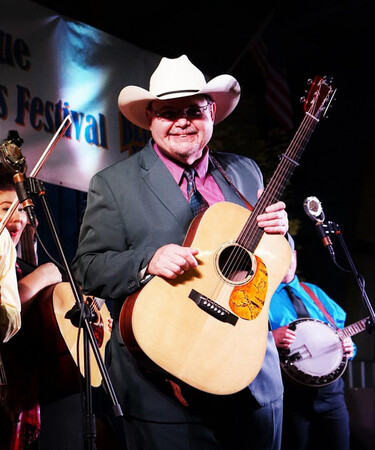
Junior Sisk’s It’s All Fun and Games offers more than a collection of songs—it presents a living case study of how tradition operates in American bluegrass. In 11 tracks, Sisk and his band perform the delicate dance between preservation and innovation, a dynamic that ethnomusicologists recognize as central to the survival of folk-derived genres.
The opening track, “Where Love Goes To Die,” situates itself firmly within the lament tradition of bluegrass. The song’s lyrical content resonates with the Appalachian themes of loss and endurance, while musically it employs the canonical instrumentation: mandolin, banjo, guitar, bass, and harmony vocals. What is striking is how the band’s technical precision elevates the material without stripping it of its rustic authenticity. Heather Berry Mabe’s harmony, in particular, invokes what Miss Dixie Hall once described as “mountain clear”—a sonic aesthetic tied to geographic and cultural identity.
The title track, “It’s All Fun and Games,” is particularly interesting from a cultural standpoint. While the phrase implies levity, the song underscores the irony of human relationships—a reminder that humor and sorrow coexist in bluegrass storytelling. This duality reflects what folklorist Henry Glassie once called “the laughter behind the tears,” a defining feature of Appalachian expressive culture.
https://open.spotify.com/album/0nqiYFm6kiy9Fv5vfRvF3W
“Still Be Blue” and “The Last Time Again” exemplify the genre’s recursive use of melancholia. These songs, though contemporary in authorship, feel centuries old in spirit. They draw upon the modal qualities and lyrical tropes inherited from Scotch-Irish balladry, filtered through the distinctly American experience of rural life. By contrast, “Sweeter Than Tupelo Honey” reflects the celebratory side of bluegrass, where sweetness and devotion serve as a counterbalance to the pervasive themes of heartbreak.
From an instrumental standpoint, Jonathan Dillon’s mandolin lines and Tony Mabe’s banjo playing illustrate the “drive” that Bill Monroe once insisted defined bluegrass. Curt Love’s bass provides the essential rhythmic grounding, ensuring that the ensemble functions as a cohesive unit rather than a collection of soloists. The interplay between musicians is communal, echoing the jam-session roots of the genre.
“I Don’t Hurt Anymore,” a cover, represents an intertextual gesture, placing Sisk within a continuum of interpreters who keep older repertoire alive. Meanwhile, “The Devil’s Train” serves as a metaphorical climax. Its apocalyptic imagery resonates with both religious and secular audiences, reflecting the deep cultural entanglement of bluegrass with evangelical Christianity and Appalachian moral storytelling.
Junior Sisk himself is a fascinating figure in ethnomusicological terms. Rooted in the Blue Ridge Mountains, influenced by The Stanley Brothers and the Johnson Mountain Boys, he embodies a lineage of transmission that connects family, community, and professional performance. His career trajectory—from songwriter to bandleader, from Rebel Records to Turnberry—demonstrates how institutional recognition (IBMA awards, SPBGMA honors) validates traditionalism even within a commercialized framework.
It’s All Fun and Games thus functions on multiple levels: as entertainment, as tradition-bearing, and as cultural performance. For scholars, it underscores how bluegrass continues to thrive not by breaking radically with the past but by carefully curating and reanimating it. For listeners, it’s simply great music, delivered with skill, passion, and authenticity. In bridging these worlds, Junior Sisk reaffirms that bluegrass is not just alive but vital.
Gwen Waggoner
